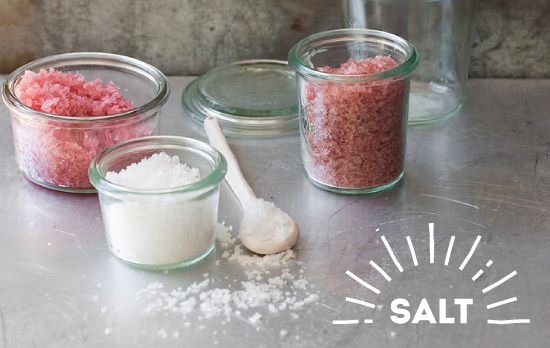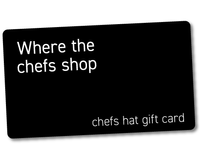 |
| Salt is the main seasoning ingredient we use. It heightens the flavours of food, whatever you’re cooking. You can even use it in some sweet dishes, such as salted caramel. |
Types of Salt
There is no substitute for the flavour of a good quality sea salt. Pre-ground pepper or table salt, in our opinion, will never release the same intensity of flavour. |
|

Course Salt
Made up of large-grained salt crystals, so best used in a grinder.
|
|

Salt Flakes
Fine crystals of sea salt.
|
|

Fluer de Sel
The ‘caviar’ of salt, which comes from France
to be truly authentic; great for salads & cooking fresh vegetables.
|
|

Grey Salt
A moist, unrefined sea salt, which has a very minerally flavour;
generally used at the table.
|
|

Smoked Sea Salt
Great to season soups, salads, pasta dishes & sandwiches.
|
Quick Tips for Using Salt
• Salt takes away the bitterness from food and adds flavour. Without it, meat, vegetables and fruit can taste dull or insipid.
• Salt makes the flavour in a dish sparkle – but if you can taste it over the other flavours, there’s too much.
• Salt is a preservative, used for salting and curing.
It draws out moisture. When cooking meat, this makes a huge difference, as salt draws out protein moisture, which then evaporates, intensifying the flavour.
• In bread, salt controls the fermentation rate of yeast and has a strengthening effect in the gluten of the dough. If you leave out salt, you end up with air pockets.
Adding salt can balance the sweetness in cakes and muffins.
• Boiling eggs in salted water makes them easier to peel.
• Adding salt to boiling water increases its temperature, which results in faster cooking.
|
|
More from the Seasoning School
|







